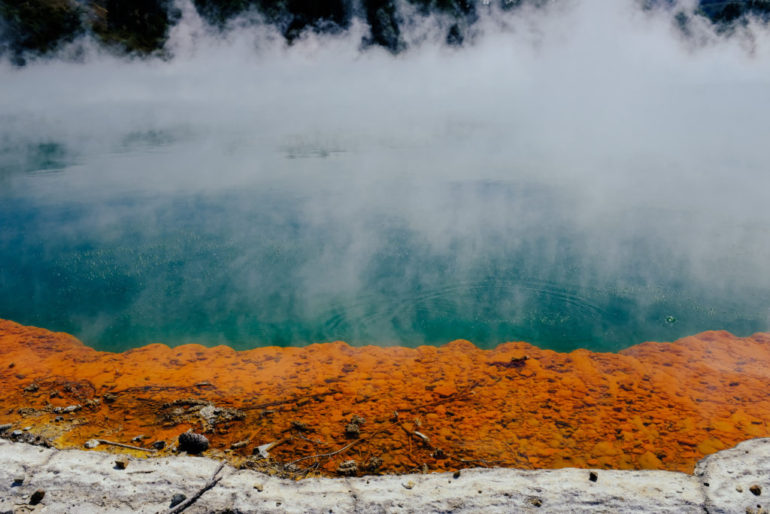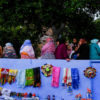In Rotorua, New Zealand, we learned about how Maori people designed a village around volcanic life.
“It smells like rotten eggs.”
We were surprised by how many times we encountered this comment in Rotorua, hearing it spoken aloud and reading it on blog posts, reviews, and even the official Rotorua website. Honestly, we didn’t find the smell that repulsive, but it was definitely pungent.
Rotorua’s nickname is the city of sulfur, which comes from all its geothermal activity. Visitors from all around the world come to check out the crazy colors of the lake and the Maori villages who rely on the heated water.
Even Rotorua’s playground is volcanic-themed, a reflection of its environment.
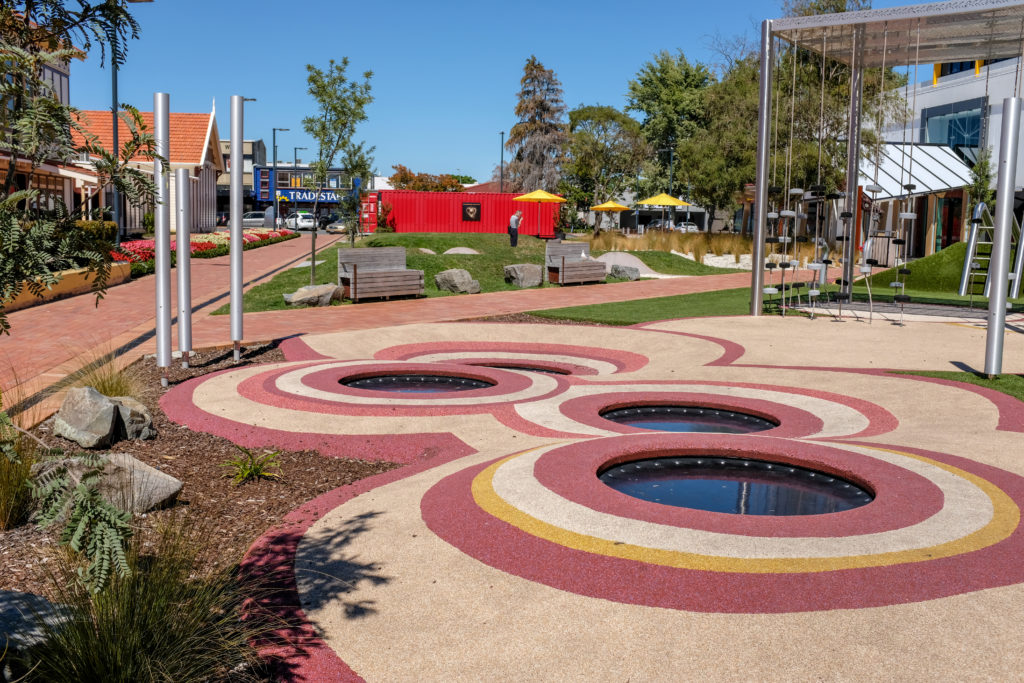
We visited Whakarewarewa, a Maori village, to learn more about how the local tribe uses the natural conditions around them.
I was fascinated by how the heated water touched every aspect of their lifestyle: leisure, food, and daily cleansing. We visited their public tubs, where they bathed together as a community.
After dipping my hand into the water, it felt like it was coated with baby oil. The residents compare the feeling to bathing in heated milk. The coolest part is that they don’t need shampoo or soap, since the rich mineral content in the water fully cleanses and enriches their skin.
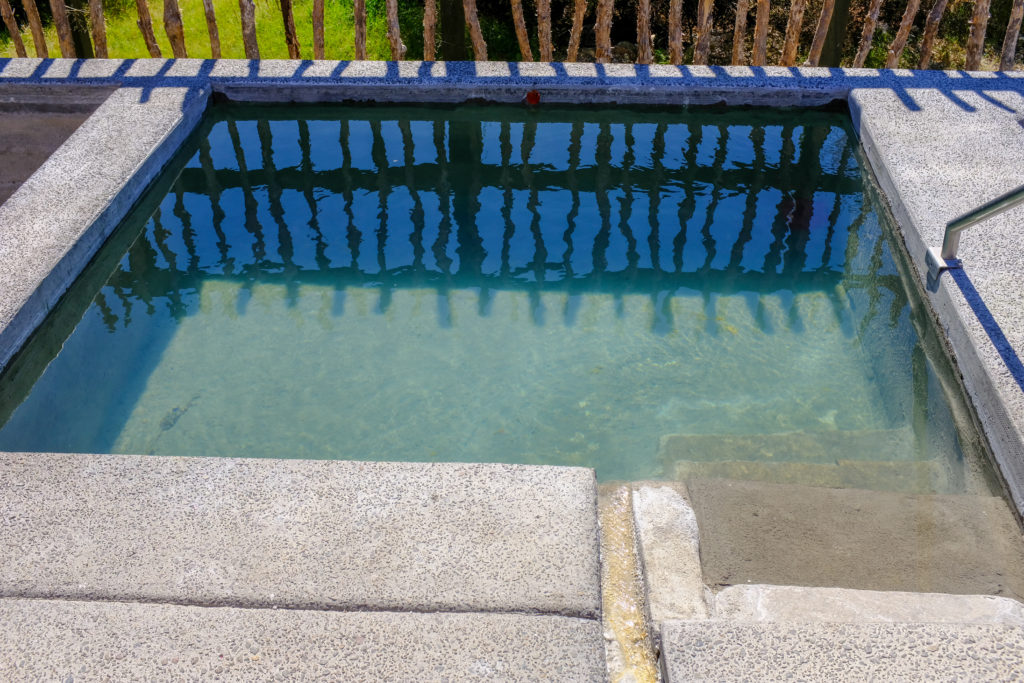
The villagers also hang out at a local swimming hole known as “The Blueys,” which ranges in temperature between 18-24 degrees Celcius (64-75 degrees Fahrenheit). The water comes directly from the run-off of the geyser next to it.
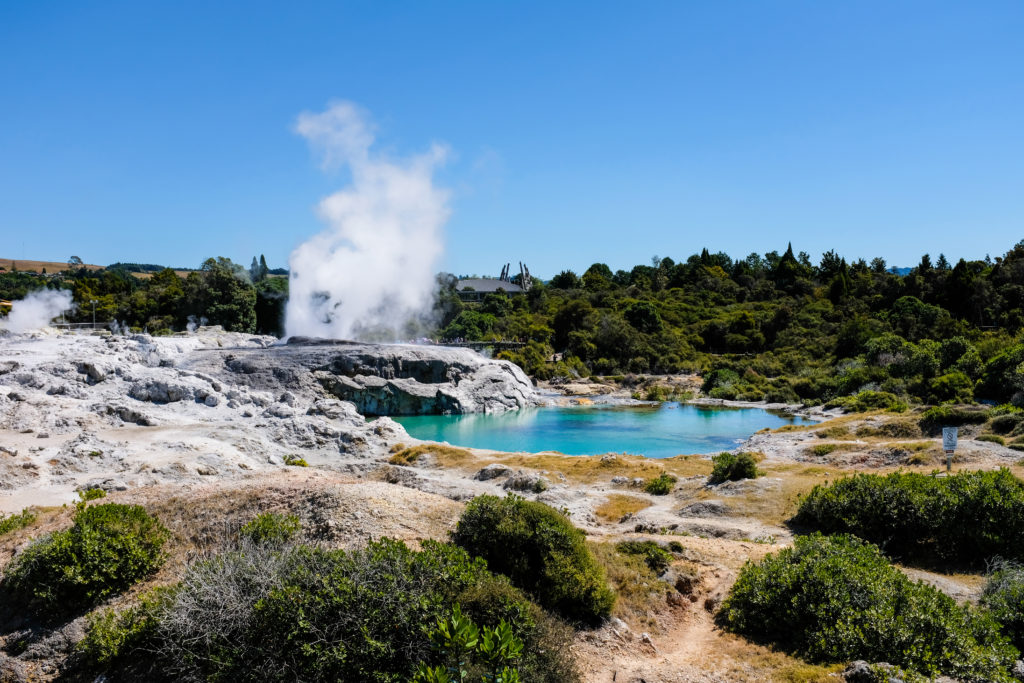
Of course, the water can get far hotter than that. Closer to the village, it can reach up to 100 degrees Celcius (212 degrees Fahrenheit). Even standing near the steam from this boiling pool made my face feel uncomfortably heated.
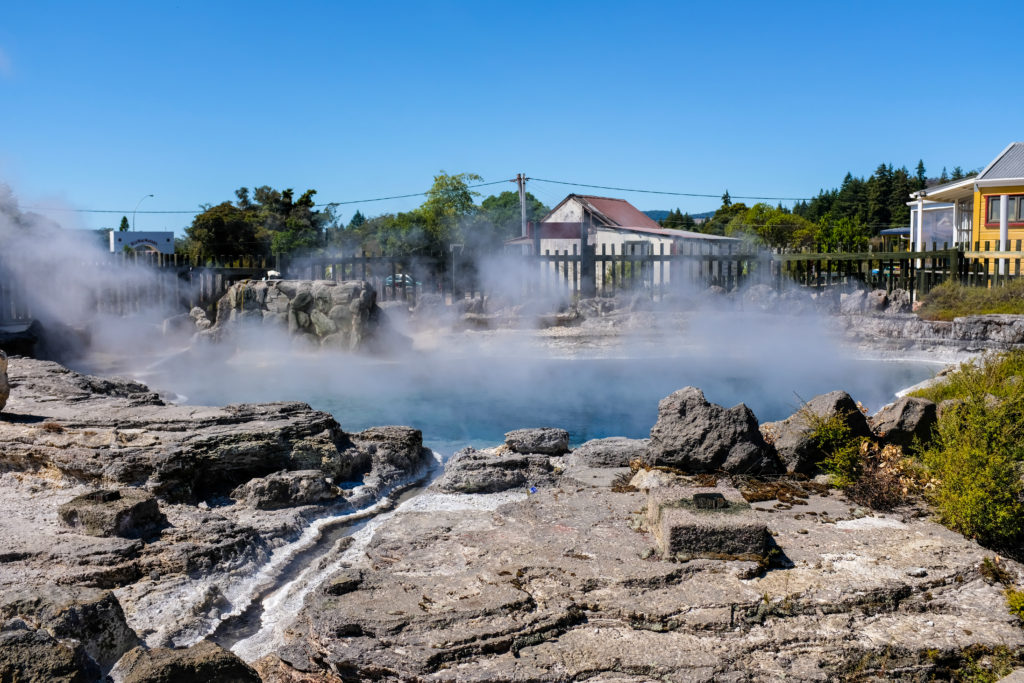
I was really interested by how they cook. They place food like corn and meat in Hangi steam boxes, which are set over geysers to absorb the steam.
It’s like an instant pot or pressure cooker—there was no need to attend to their food and they just retrieve it when it’s ready. It takes around 2.5 hours to cook red meat, chicken, or solid vegetables like kumara (sweet potato). If they’re in a rush, they just tie a piece of twine around a corn cob and dunk it inside the hot water.
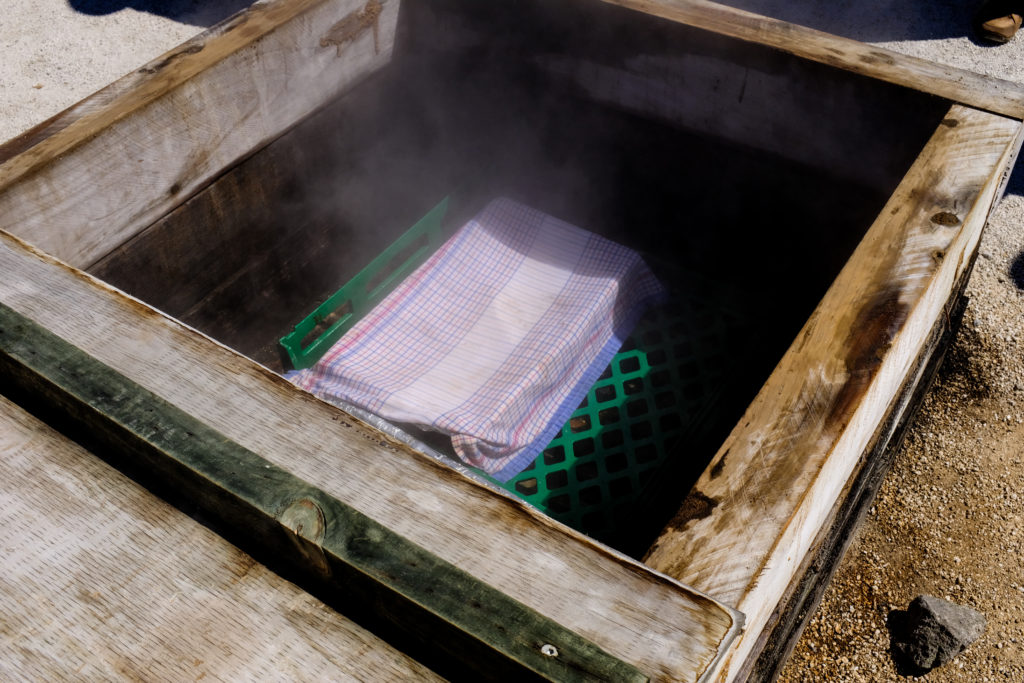
After our village visit, we went to Wai-o-tapu, known as a geothermal wonderland. It’s situated in the Taupo Volcanic Zone, one of the most active volcanic areas in the world. It was shocking to experience the feast of colors in the water, from electric yellows to rusted reds.
There were also so many sounds of bubbling and gurgling mud, hissing water, and the churning ground—at one point, it sounded like there was a giant laundry machine beneath our feet.
The most well-known sight in the park is the Champagne Pool, with colors and bubbles derived from the abundance of CO2. When you get up close, the steam literally envelops you—it’s hard to see where you’re going, but luckily there’s a fence so you don’t accidentally step into the burning water.
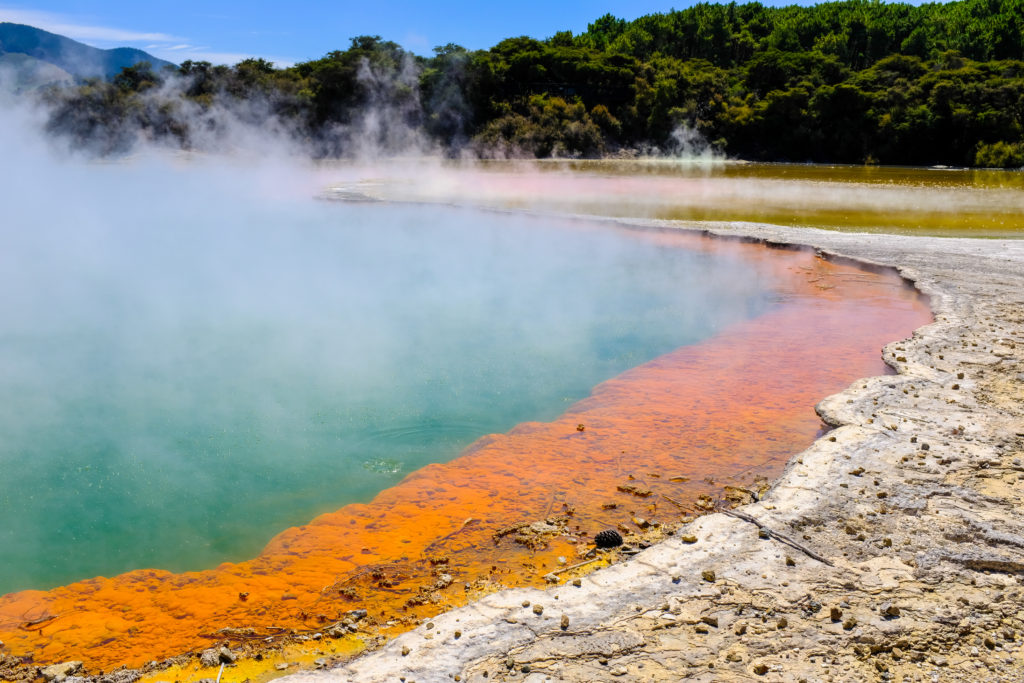
Here’s a pool known as The Artist’s Palette, with colors blended from arsenic and sulphur.
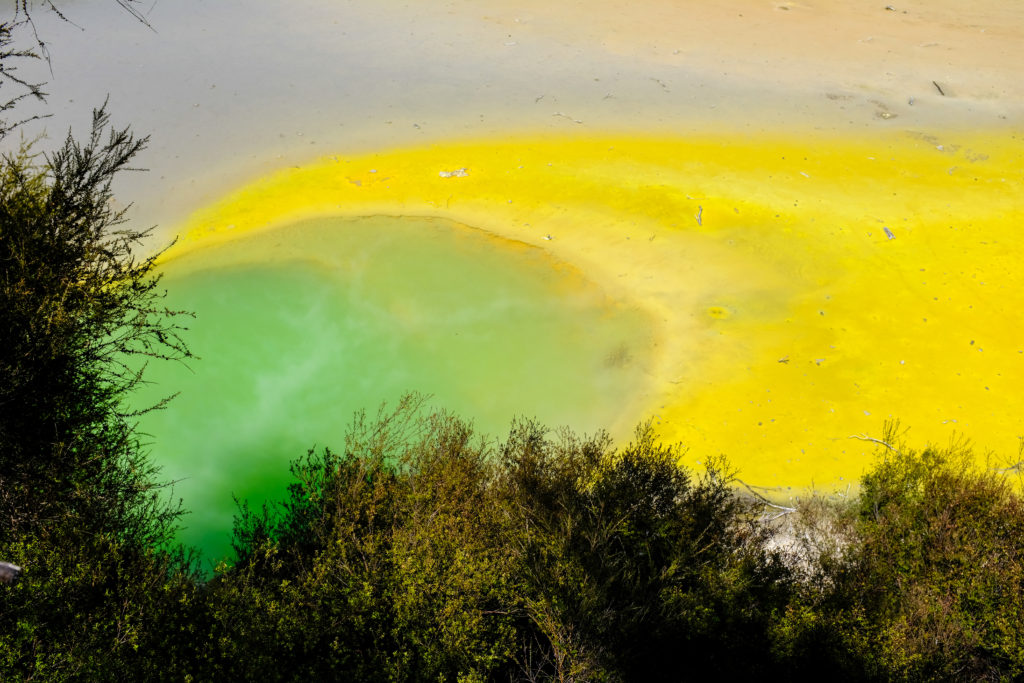
We also saw The Devil’s Bathtub, which is literally neon green.
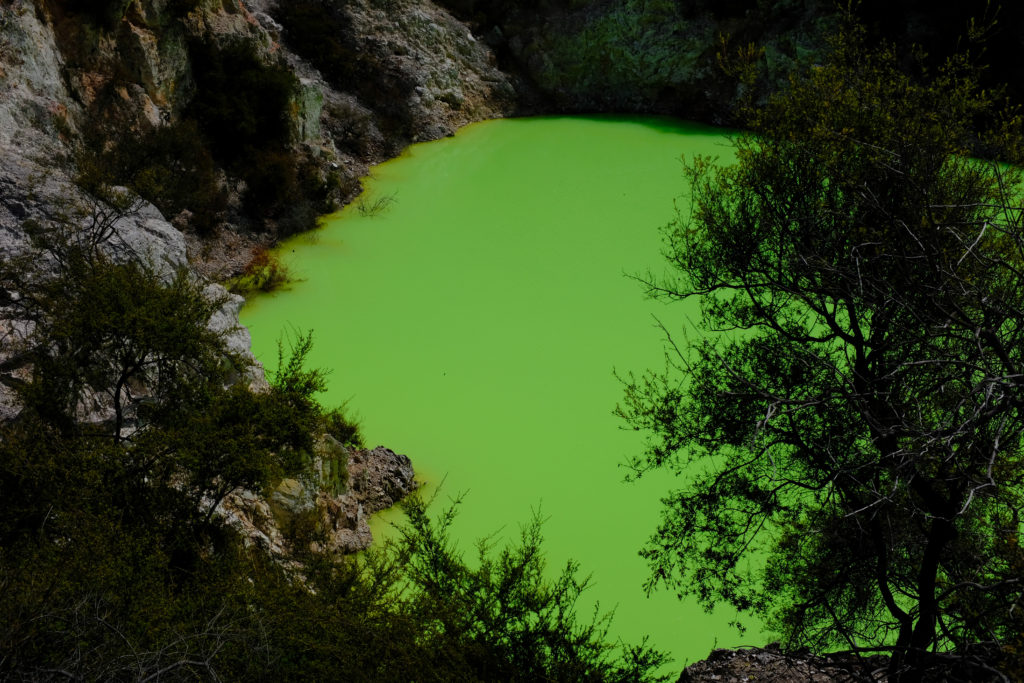
The park felt like it was out of a science-fiction novel, or at least situated on another planet. It was incredibly surreal to witness it in real life, and it definitely reminded me that nature is the best artist out there.

